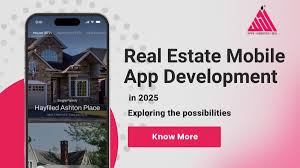User-friendly Mobile App: Creating a mobile app for property dealing involves a systematic approach to ensure the app is functional, user-friendly, and meets the needs of buyers, sellers, and property agents. Below is a step-by-step guide for creating such an app:
User-friendly Mobile App Step 1: Define Your App Features
Essential Features:
- User Registration and Profiles
- Buyers, sellers, and agents can create and manage accounts.
- Social media and email login options.
- Property Listings
- Upload details of properties with photos, videos, prices, and descriptions.
- Filters for location, price range, property type, and amenities.
- Search and Filters
- Search bar with advanced filters (e.g., city, budget, square feet, etc.).
- Map integration to view properties on a map.
- Property Posting
- Allow users to post properties for sale or rent.
- Include forms for uploading images, location, price, and descriptions.
- Favorites/Bookmarking
- Users can save properties for later viewing.
- Contact and Chat
- In-app messaging between buyers and sellers/agents.
- Direct call or email integration.
- Push Notifications
- Alerts for new properties, price drops, or saved property updates.
- Secure Payment Gateway
- For services like property promotions or premium listings.
- Admin Panel
- Manage users, listings, payments, and other backend activities.
- Reviews and Ratings
- Let users review agents and provide feedback on services.
Step 2: Choose the Tech Stack
Frontend (User Interface):
- Frameworks: Flutter (for cross-platform apps), React Native, or Swift (for iOS) and Kotlin (for Android).
- UI Tools: Figma or Adobe XD for designing user interfaces.
Backend:
- Programming Languages: Node.js, Python (Django/Flask), or PHP (Laravel).
- Database: MySQL, PostgreSQL, or MongoDB.
Other Tools:
- Cloud Storage: AWS S3, Google Cloud, or Firebase for storing property images/videos.
- APIs: Google Maps API for map integration, Twilio for in-app chat.
Step 3: App Design
- Wireframing
- Sketch the layout of the app using tools like Figma, Sketch, or Adobe XD.
- User Interface (UI)
- Create an attractive and intuitive interface with consistent color schemes, typography, and navigation.
- User Experience (UX)
- Ensure smooth transitions, fast loading times, and minimal effort for users to navigate the app.
Step 4: App Development
Frontend Development
- Use frameworks like Flutter or React Native to create cross-platform apps.
Backend Development
- Set up server-side logic for user authentication, property data management, and payment processing.
Integration
- Connect the frontend with the backend via RESTful APIs.
- Integrate third-party APIs like Google Maps and payment gateways.
Step 5: Testing
- Test the app for bugs and performance issues on multiple devices.
- Use tools like Appium or Selenium for automated testing.User-friendly Mobile App
Step 6: Launch
- Publish to App Stores
- Submit the app to the Google Play Store and Apple App Store.
- Follow their respective guidelines for app submission.
- Marketing the App
- Promote the app on social media, property listing platforms, and through email campaigns.User-friendly Mobile App
Step 7: Maintenance and Updates
- Regularly update the app with new features and fix any bugs reported by users.
- Monitor app performance using analytics tools like Google Analytics for Mobile.
Estimated Development Cost
The cost to develop a property dealing app can range between $5,000 – $50,000, depending on the features, design complexity, and development time. Using a cross-platform framework like Flutter can reduce costs significantly.User-friendly Mobile App
User-friendly Mobile App-Want Help Building the App?
Gitakart Digital specializes in creating professional apps tailored to your business needs. We can develop your property dealing app with all the features listed above.User-friendly Mobile App
Contact Us
- Email: info@gitakart.in
- Phone/WhatsApp: 9749101117
- www.gitakartdigital.xyz


Итальянские салоны мебели для вас
мебель из италии купить http://www.kupit-mebel-italii.ru .
проекты загородных домов tipovye-proekty-domov.ru .
конкурсный управляющий http://konkursnyj-upravlyayushhij-po-bankrotstvu.ru/ .